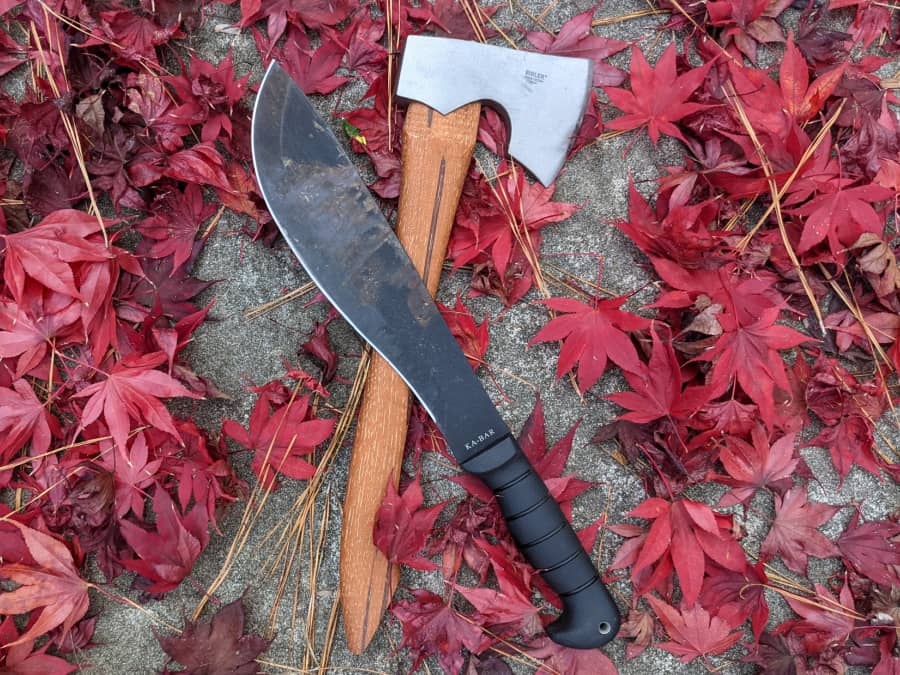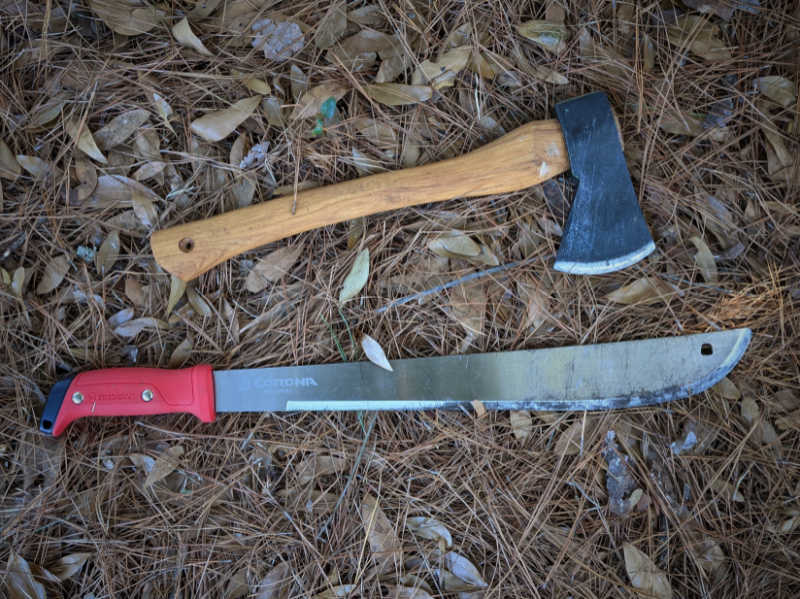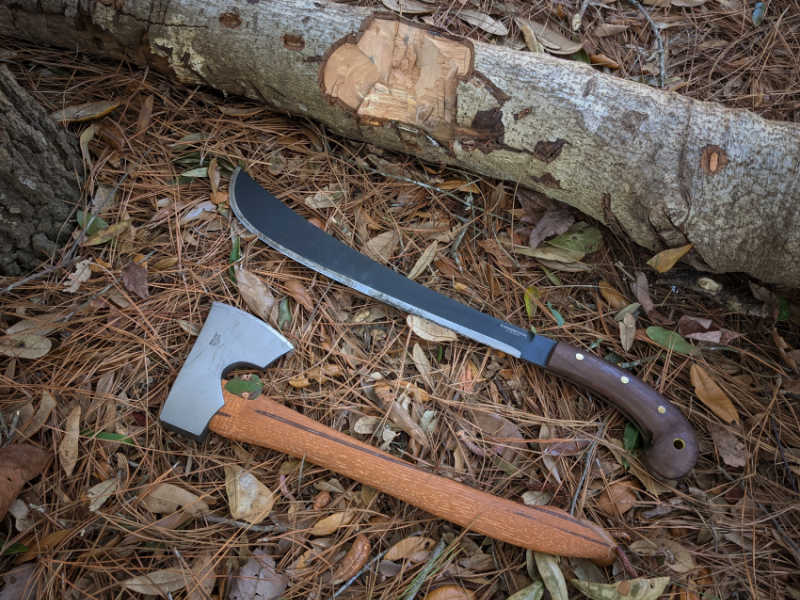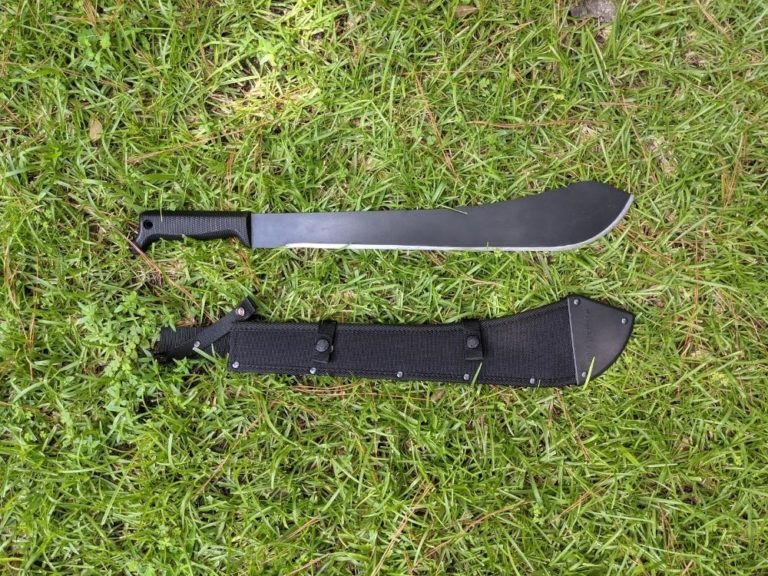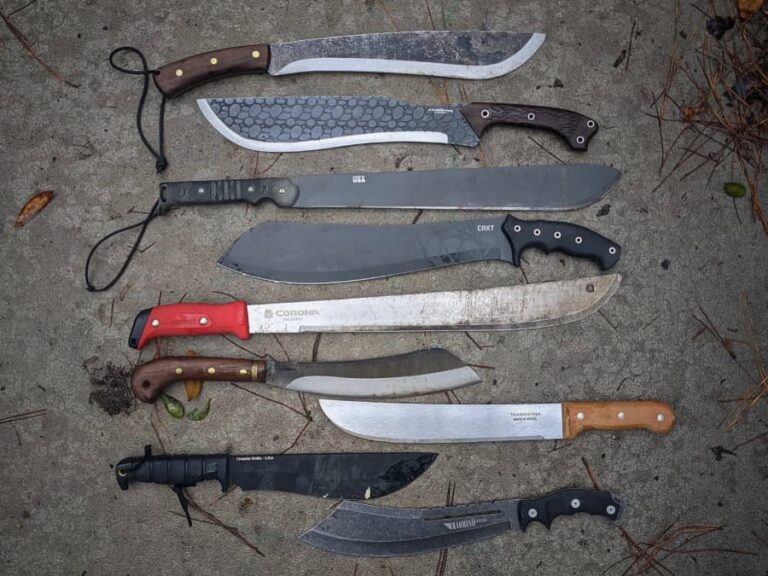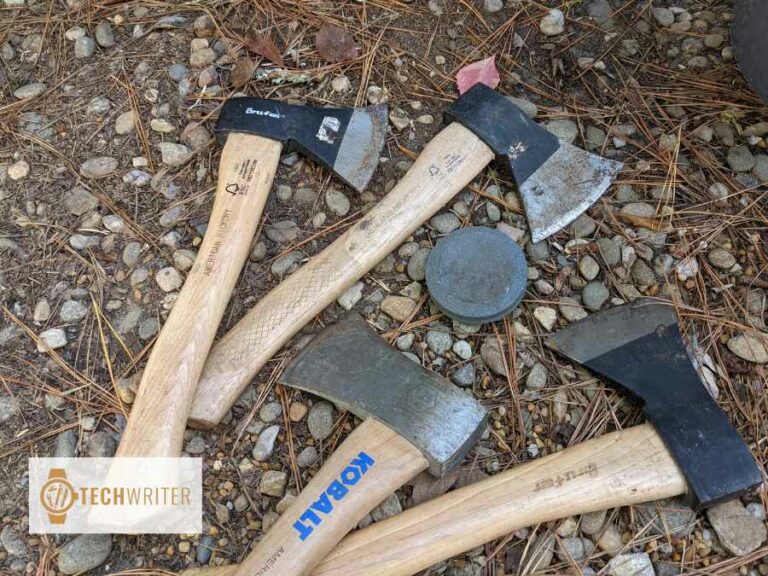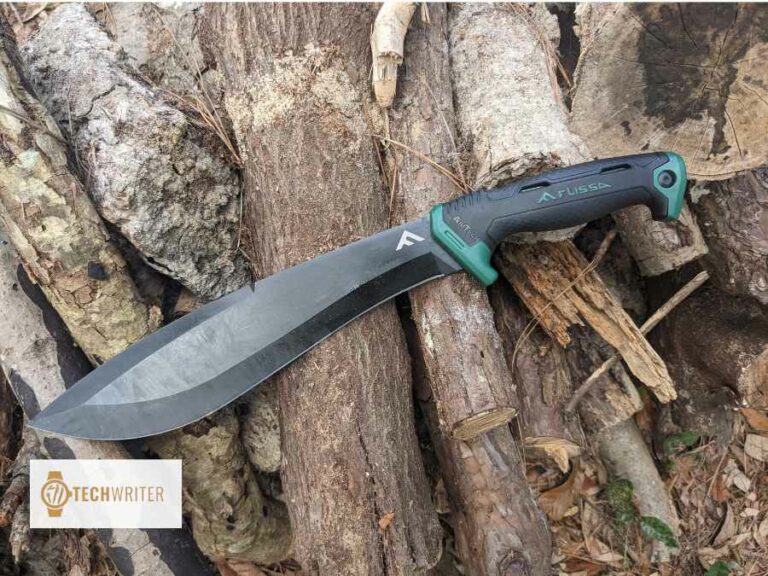Hatchet Vs. Machete: Which Tool Do You Choose?
You have One Tool: Hatchet vs Machete
Being prepared is important. We have all of our basic tools ready to go with us wherever we go, but sometimes we need something a little extra just in case. We need something that we can carry, that doesn’t take up too much room and that can be used in a variety of circumstances. This brings us to two major options: hatchets and machetes.
Now, ideally, we would have both in our list of tools but what if we could only bring one? Which one we choose comes down to a number of factors, so let’s look at what each offers and what we need to consider when selecting our extra tool.
Environment
The environment where we live and will most likely find ourselves really determines what we should carry. For example, an area with dense hardwoods might be better suited for a hatchet than a machete. On the other end of the spectrum, an area with a lot of vines and grasses will benefit from a more traditional machete than a hatchet. Other areas might even have a combination of both and require a hard long look at which specific version of your hatchet or machete will work better in that area.
We have a spectrum of designs in both categories, so let’s look over what each brings to the table.
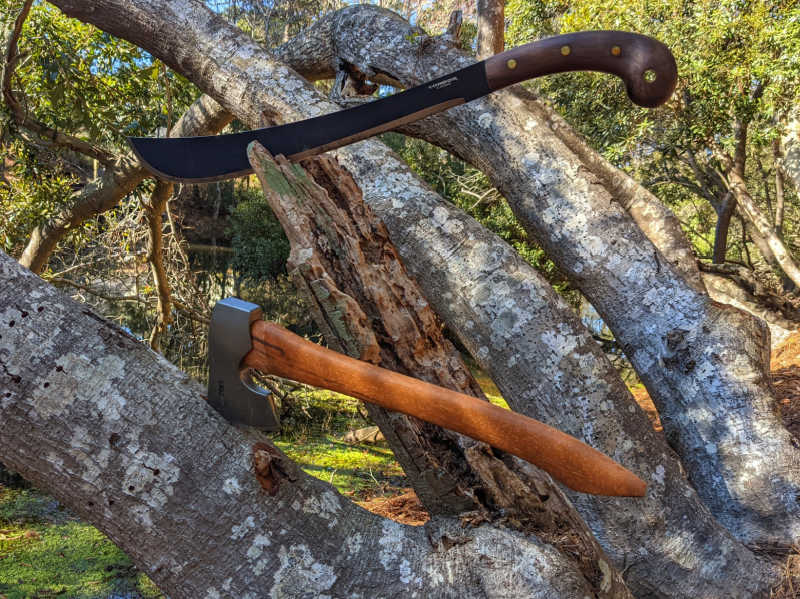
Machetes
Machetes come in all shapes and sizes. Some are closer to large knives than what we traditionally think of as machetes (the bolo or smatchet designs are perfect examples). Other times, a machete is an almost sword-sized tool with a blade of 22 inches. Then we have machetes that fall between these two extremes, and do most of the work we need them to.
Let’s first look at the different parts of a machete and what we should look for when selecting our “do everything tool.”
At its core, a machete is a blade and a handle. The blade comes in different lengths, blade shapes, points, and thicknesses. For the most part, the average machete will feature a rather narrow blade optimized for slashing or hacking motions. This is mostly because it was designed for working against things like cane, grass, or other thin fibrous material. They tend to be longer than our normal bushcraft or camp knives, using that extra length to help leverage more force through those densely clumped grasses and cane.
This thinness of blade can be problematic if we try to do any type of prying or torquing with the blade. This is usually reserved for our primary knife or for shorter, more reinforced, machete designs. These shorter designs are more like large chop-centric knives. Thicker at the spine with more ability to get an aggressive grind and edge on them, these blades are better for a wide variety of tasks. It allows them to fit a number of roles but this doesn’t mean some interesting tricks can’t be used with them and their thinner brethren to meet your needs.
Read Our Guide On The Best Machetes For Clearing Brush Here
Most people will think of the machete and immediately relegate it to only being an agricultural tool or the preferred weapon of a masked serial killer. In reality, the machete is a very capable tool that can give you the ability to do some serious woodwork.
Many native tribes use machetes to craft their traditional clubs among other wooden tools. This ranges from harvesting the wood itself to shaping it to the desired dimensions. A machete can function as an improvised draw knife and, when choked up on, it can be used for finer tasks.
The tip and blade shape of the machete also come into play. Some more traditional designs feature a point or leaf shaped blade. This allows it to be used as a weapon and field knife like many Filipino style blades.
Overall, the machete’s usefulness comes from the durability of its materials and the inventiveness of the end user. It is perfect for clearing out light vegetation, thin branches, and other obstacles. If your machete is sturdy enough, it can also be used to split wood with the batoning method. Add the ability to make other tools with it (like primitive bows and cordage) and the machete pulls ahead in the list of “To Bring” items.
But let’s look at your other option: the hatchet.
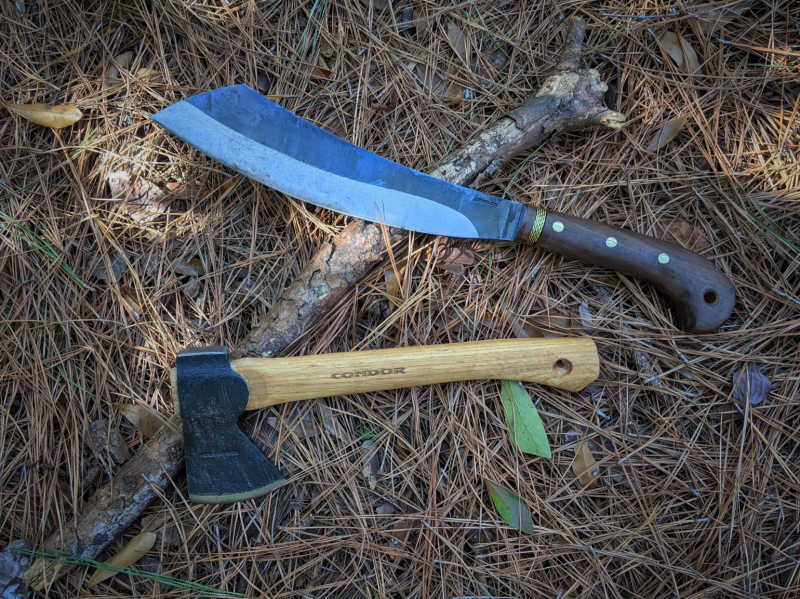
Hatchets
Hatchets, or small hand axes, have been a part of mankind’s equipment since the stone age raiding parties all the way up to the late 1900s. These hatchets go by a number of names like mounted celts, tomahawks, or just hatchets. They were prized for their relative simplicity and their “definitive” use on the battlefield.
So if you want to feel like a viking on a raid or just want to carry a fraction of an ax with you, you should consider bringing a hatchet.
Hatchets are just as versatile as machetes but are hampered by their designs. They feature more parts to them, creating a more complex tool with some drawbacks.
Let’s look at its composition first. Hatchets and tomahawks feature a head and a shaft. The head is broken down into the front and back sections. The front consists of the toe at the top of the blade, the bit (or front section) of the blade, the heel (or lower portion) of the blade, and the beard (or hooking area) of the blade. The rear of the head is either called the butt or the poll and can come in a variety of designs. In more traditional hatchets a hammer head can be found on the pole of the hatchet. Other styles feature a spike or even sometimes a pipe, and others have no special poll at all.
See Our List Of The Best Hatchets Under $50 Here
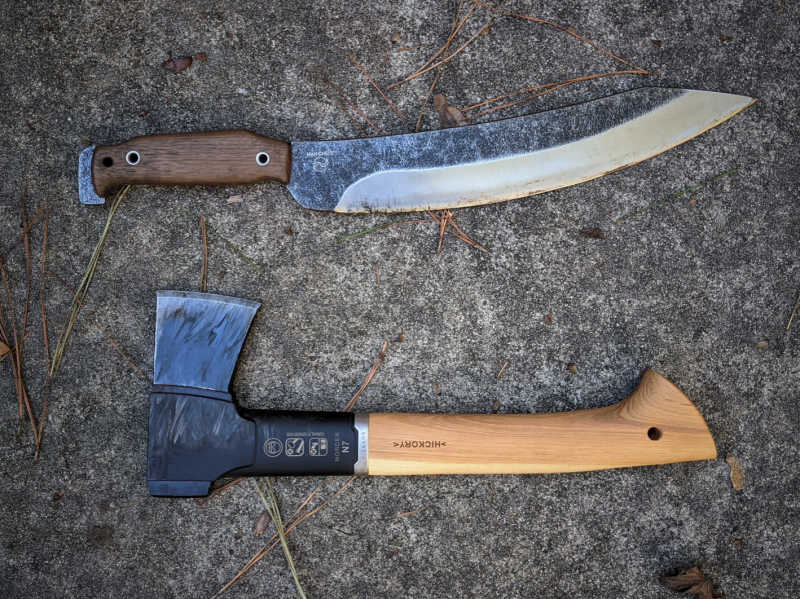
The handle is usually made from some type of hardwood, metal, or fiberglass/plastic. Metal handles provide greater durability with less care while wooden handles can have great longevity if properly seasoned and cared for. Plastic or fiberglass are more modern options that have both durability and ease of care associated with them.
Unlike machetes, hatchets have a good portion of their weight located in their head. This helps with chopping motions but is hampered by the size of the cutting edge. A machete has a usable edge along most of its length, while the actual function edge of a hatchet is only several inches. Most of the weight of the hatchet is focused on those few inches of blade, but that limits what can be done with it.
A hatchet or tomahawk can be used like a small knife when you choke up on the head. It can even be used in the process of skinning an animal in this way. Oddly enough, one of the advantages of wooden handled tomahawks is that the head can be used to carve a new handle should the old one break. The head can be used like a celt or primitive palm ax to shape the new handle. Combine this with a flat poll and you have an improvised splitting wedge.
Most of the utility of the hatchet is its ability to be used as a hammer and its ability to power through dense material like wood. Saplings and denser woods can be defeated by a sturdy hatchet. Maybe not as easily as a proper woodcutting ax, but faster than some machetes.
Which is better a hatchet or machete?
Both options add weight to your overall equipment, however the machete has the most usable edge for its added weight than the hatchet. Its wider ability to woodwork and its ability to work on a wide variety of materials compared to the hatchet make it the better option for most tasks.
The hatchet can be used to hook and pull items, it can be used as a hammer, and it works better on a wider variety of trees. But keep in mind, it is utterly useless when cutting reeds, grasses, and cane. The effort it would take to clear an area of grass with a hatchet is exhausting just to think about. With a machete that job is much easier. The hatchet has a lot of benefits when you need a small portable ax, but overall the machete wins out from a utility perspective.
Hatchets are also heavier than most average machetes, ranging from 1 ½ to over 2 pounds. Most machetes are under 2 pounds with some exceptions. But the variety of blade shapes they provide make up for any of those extra ounces while the hatchet is limited to one or two blade variations.
Of course we know that this will all come down to personal preference, and, as stated earlier, the type of environment you’ll be in. Maybe you want the visceral feel of a hatchet and want to play the Norse wildman. Or maybe you want the lighter multipurpose tool to stalk around the proverbial rice paddies with. Either way, choose the tool that will suit you and your environment the best.

Blair Witkowski is an avid watch nut, loves pocket knives and flashlights, and when he is not trying to be a good dad to his nine kids, you will find him running or posting pics on Instagram. Besides writing articles for Tech Writer EDC he is also the founder of Lowcountry Style & Living. In addition to writing, he is focused on improving his client’s websites for his other passion, Search Engine Optimization. His wife Jennifer and he live in coastal South Carolina.

